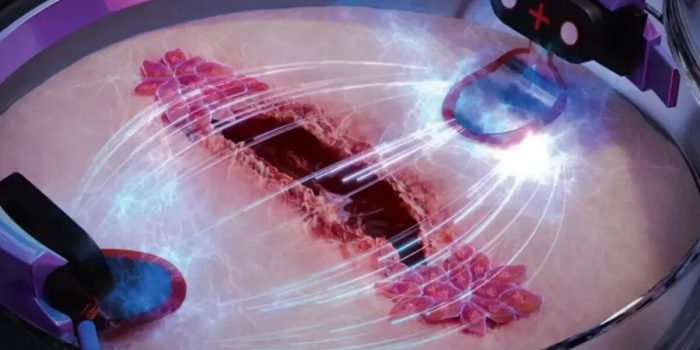Many medical conditions such as diabetes, cancer, disturbed blood circulation, and spinal injuries can disturb the body’s natural ability to heal wounds and may cause them to heal slower or not at all.
These chronic wounds eventually lead to infections and amputations. Hence patients who live with such conditions live a difficult life and have to be very careful.
But researchers at Chalmers Institute of Technology (CTH) and the University of Freiburg have proposed a very interesting and innovative technique using electric current that enables chronic wounds to heal faster than ever; three times as faster to be exact.
“Chronic wounds are a huge societal problem that we don’t hear a lot about. Our discovery of a method that may heal wounds up to three times faster can be a game changer for diabetic and elderly people, among others, who often suffer greatly from wounds that won’t heal,” said Maria Asplund, one of the study authors and an associate Professor of Bioelectronics at CTH.
An already well-known hypothesis is the base of this research which suggests that human skin is electrostatic via the electric stimulation provided. What this means is that the cells of our skin are sensitive to electric current and when placed in an electric field, the cells present will start moving in the direction of the area where electric stimulation is being provided.

Using this concept, the researchers have created a biochip containing cultured skin cells with properties similar to human skin cells. Next, they chose two cells and made wounds on them. One cell was allowed to repair under an electric field (200mV/mm), while the other healed without any electric stimulation.
The researchers noticed that electricity enabled the former to heal three times faster than the latter. “We were able to show that the old hypothesis about electric stimulation can be used to make wounds heal significantly faster,” said Asplund.
Since the electric current guides the skin cells, they quickly align in one direction and migrate faster towards the damaged site when electrically stimulated making the wound heal faster eventually. While in the absence of this very current, the cells move randomly.
They tested their approach in diabetes models and noticed that the speed of healing in cultures cells with diabetes increased under the influence of an electric field. Asplund further explained, “With electric stimulation, we can increase the speed of healing so that the diabetes-affected cells almost correspond to healthy skin cells.”
Asplund and her team are confident that their technique will help all patients diagnosed with medical conditions which leads to slower healing of their wounds. They are eager to continue working on this method in order to improve it further and to eventually use it worldwide to help millions of patients.


